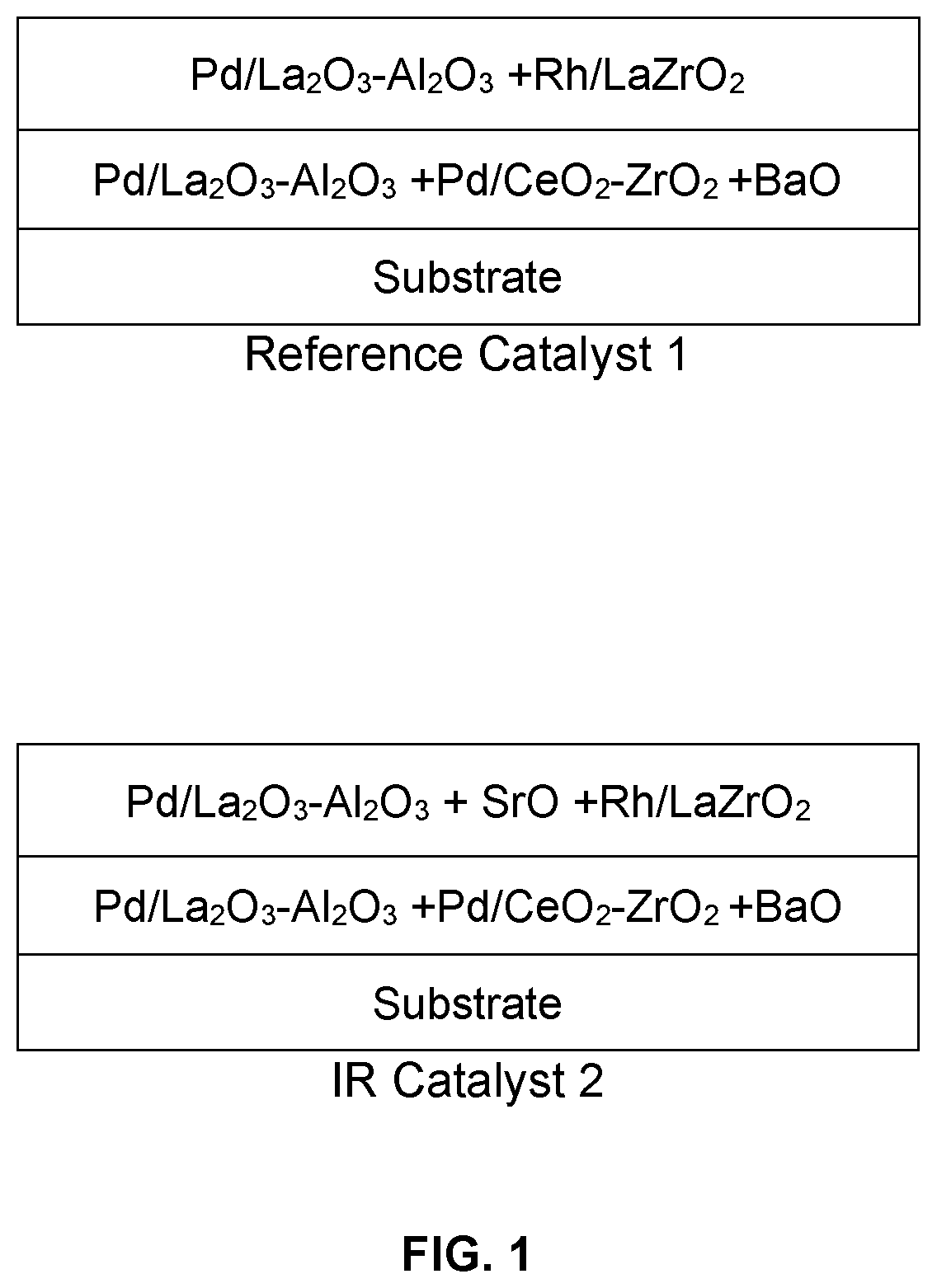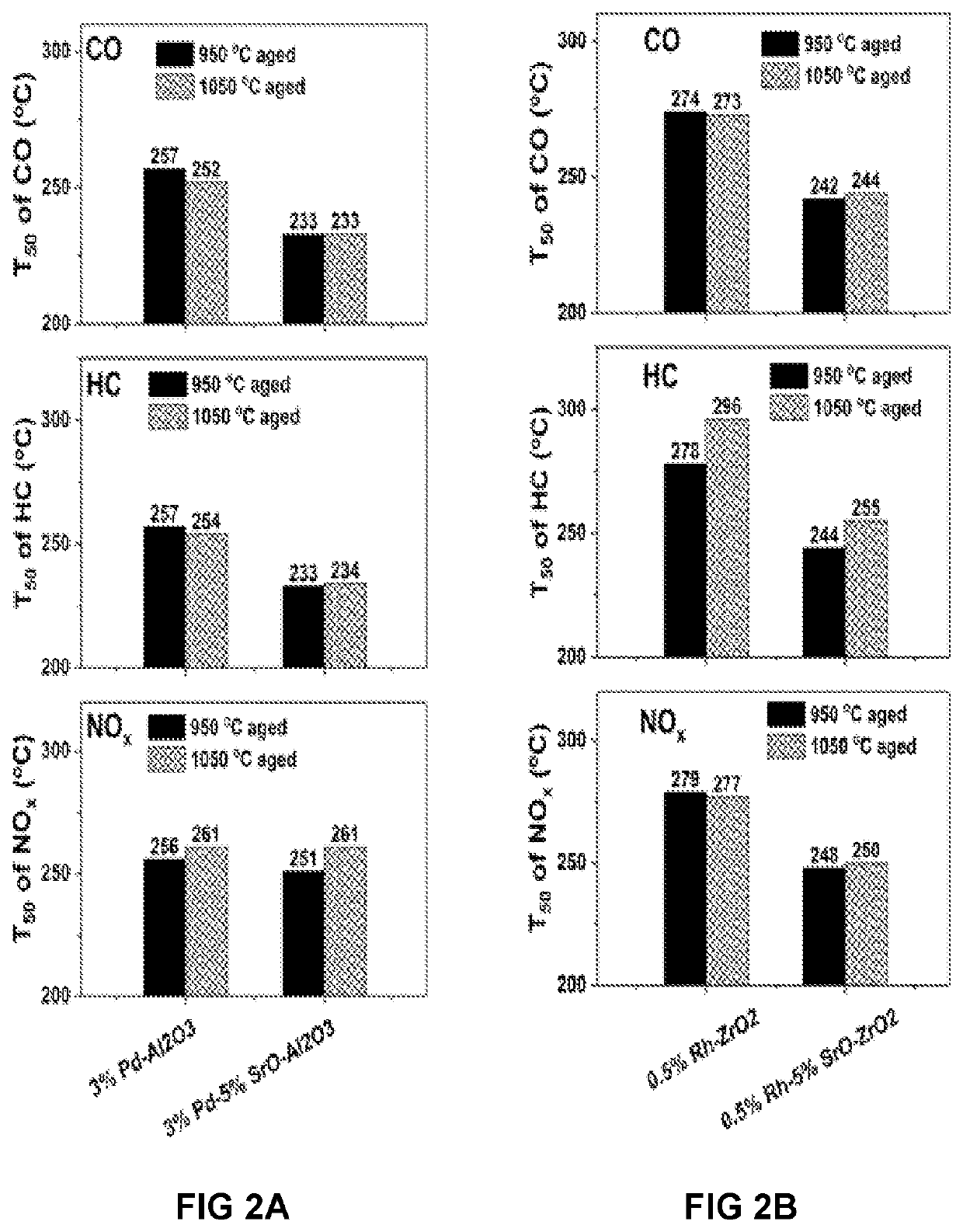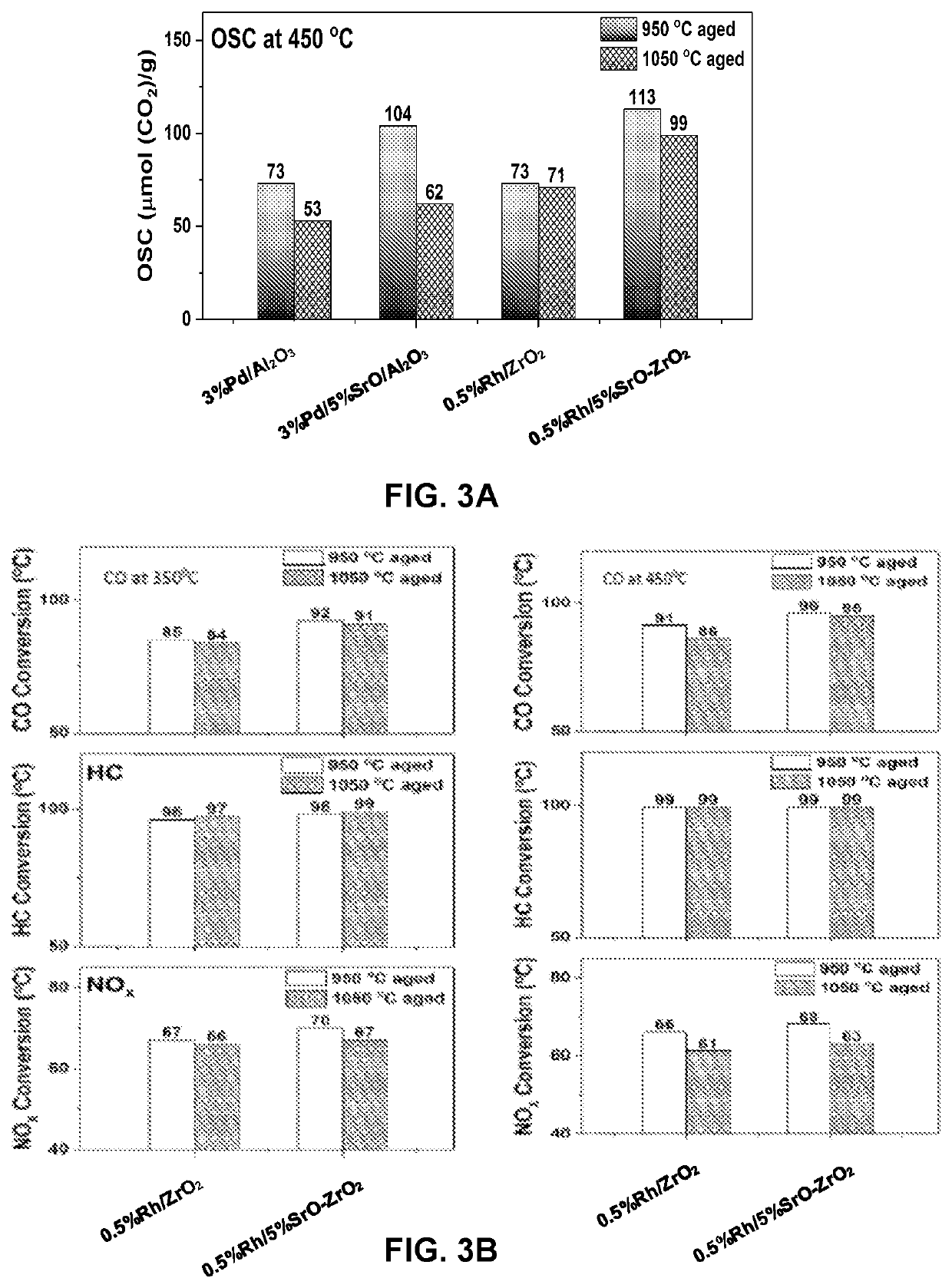Layered three-way conversion (TWC) catalyst and method of manufacuring the catalyst
a three-way conversion and catalyst technology, applied in physical/chemical process catalysts, metal/metal-oxide/metal-hydroxide catalysts, separation processes, etc., can solve the problem of large amount of pgm in gasoline emission control, and achieve the effect of improving the reducibility of pgm, promoting catalytic performance, and improving pgm effectiveness
- Summary
- Abstract
- Description
- Claims
- Application Information
AI Technical Summary
Benefits of technology
Problems solved by technology
Method used
Image
Examples
example 1
Preparation of Powder Catalysts and Testing Thereof
[0156]A. Reference Catalyst A: 3% Pd on alumina[0157]10.7 grams of palladium nitrate solution (Pd=29.7%) was weighed and diluted in water. The obtained palladium nitrate solution was impregnate onto alumina to obtain a mixture which was dried at 150° C. for 2 hours and calcined at 550° C. for 2 hours.
[0158]B. Invention Catalyst B: 3% Pd-5% SrO on alumina:[0159]Palladium nitrate and SrO from acetate or nitrate were dissolved in water. The obtained solution of palladium and strontium was impregnated onto alumina to obtain a mixture which was dried at 150° C. for 2 hours and calcined at 550° C. for 2 hours.
[0160]C. Reference Catalyst C: 0.5% Rh on high surface area Zirconia (ZrO2)[0161]4.6 grams of rhodium nitrate solution (Rh=10.9%) was weighed and diluted in water for 100% incipient wetness. Rhodium nitrate solution was then impregnated onto the zirconia to obtain a mixture which was dried at 150° C. for 2 hours and calcined at 550° ...
example 2
Preparation of a Layered Three-Way Catalyst (Reference Catalyst, Reference 1):
[0185]A. Bottom Layer (First Layer) Preparation:
[0186]Palladium nitrate solution (53.2 g with Pd concentration=27.6%) was impregnated onto alumina stabilized with 4% La oxide (La doped alumina=1381 grams) by using incipient wetness method. The mixture was then calcined at 550° C. for 2 hours.
[0187]Separately, palladium nitrate (53.2 grams) was impregnated onto Oxygen storage material (OSM) (2302 grams: OSM: Ce=40%, Zr=60%, La 5%, Y=5% as oxides) by using incipient wetness method. The mixture was then calcined at 550° C. for 2 hours.
[0188]Slurry Preparation:
[0189]Calcined palladium on alumina was added to water under mixing. To this, barium acetate (150.7 g) and barium sulphate (276.9 g) were added to obtain a mixture. pH of the mixture was adjusted to 4.5-5 using nitric acid. The mixture was continuously milled using an Eiger mill to particle size distribution at 90% less than 20 micro meters. To this, cal...
example 3
Preparation of a Layered Three-Way Catalyst (Invention Catalyst, IR Catalyst 2)
[0198]A. Bottom Layer (First Layer) Preparation:
[0199]The bottom layer was prepared similar to bottom layer of the reference catalyst.
[0200]B. Top Layer (Second Layer) Preparation:
[0201]29.4 grams of palladium nitrate (Pd concentration=27.1) was impregnated on 381 g of lanthanum doped alumina by incipient wetness. The mixture was calcined at 550° C. for 2 hours. To this mixture, water was added to make a slurry. pH of the slurry was adjusted to 4.5-5. Add 33 g of strontium sulphate (SrO=56.1%). The slurry was continuously milled to PSD of 90% less than 12-14 micrometers.
[0202]Separately, 18.23 g rhodium nitrate was impregnated onto 567 g of 10% La oxide doped Zirconia (Rh concentration=9.4%) by incipient wetness. The impregnated rhodium on 10% La2O3 on zirconia was added to water and pH was maintained at 8-8.5 using methanol amine. Later, pH was further adjusted to 4.5-5 using nitric acid. The obtained mi...
PUM
| Property | Measurement | Unit |
|---|---|---|
| Temperature | aaaaa | aaaaa |
| Temperature | aaaaa | aaaaa |
| Fraction | aaaaa | aaaaa |
Abstract
Description
Claims
Application Information
 Login to View More
Login to View More - R&D
- Intellectual Property
- Life Sciences
- Materials
- Tech Scout
- Unparalleled Data Quality
- Higher Quality Content
- 60% Fewer Hallucinations
Browse by: Latest US Patents, China's latest patents, Technical Efficacy Thesaurus, Application Domain, Technology Topic, Popular Technical Reports.
© 2025 PatSnap. All rights reserved.Legal|Privacy policy|Modern Slavery Act Transparency Statement|Sitemap|About US| Contact US: help@patsnap.com



